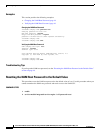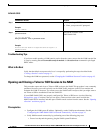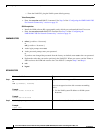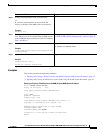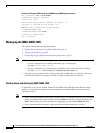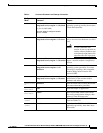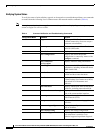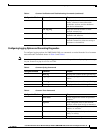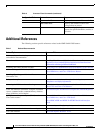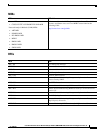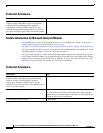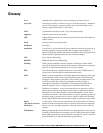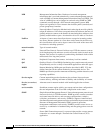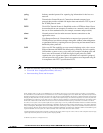
57
Cisco Branch Routers Series Network Analysis Module (NME-NAM-120S) Installation and Configuration Note, 4.0
OL-14942-02
Glossary
Note For terms not included in this glossary, see the following references:
• Cisco IOS Voice Configuration Library Glossary
• Internetworking Terms and Acronyms
CCDE, CCENT, CCSI, Cisco Eos, Cisco HealthPresence, Cisco IronPort, the Cisco logo, Cisco Nurse Connect, Cisco Pulse, Cisco SensorBase,
Cisco StackPower, Cisco StadiumVision, Cisco TelePresence, Cisco Unified Computing System, Cisco WebEx, DCE, Flip Channels, Flip for Good,
Flip Mino, Flipshare (Design), Flip Ultra, Flip Video, Flip Video (Design), Instant Broadband, and Welcome to the Human Network are trademarks;
Changing the Way We Work, Live, Play, and Learn, Cisco Capital, Cisco Capital (Design), Cisco:Financed (Stylized), Cisco Store, Flip Gift Card,
and One Million Acts of Green are service marks; and Access Registrar, Aironet, AllTouch, AsyncOS, Bringing the Meeting To You, Catalyst, CCDA,
CCDP, CCIE, CCIP, CCNA, CCNP, CCSP, CCVP, Cisco, the Cisco Certified Internetwork Expert logo, Cisco IOS, Cisco Lumin, Cisco Nexus,
Cisco Press, Cisco Systems, Cisco Systems Capital, the Cisco Systems logo, Cisco Unity, Collaboration Without Limitation, Continuum, EtherFast,
EtherSwitch, Event Center, Explorer, Follow Me Browsing, GainMaker, iLYNX, IOS, iPhone, IronPort, the IronPort logo, Laser Link, LightStream,
Linksys, MeetingPlace, MeetingPlace Chime Sound, MGX, Networkers, Networking Academy, PCNow, PIX, PowerKEY, PowerPanels, PowerTV,
PowerTV (Design), PowerVu, Prisma, ProConnect, ROSA, SenderBase, SMARTnet, Spectrum Expert, StackWise, WebEx, and the WebEx logo are
registered trademarks of Cisco Systems, Inc. and/or its affiliates in the United States and certain other countries.
All other trademarks mentioned in this document or website are the property of their respective owners. The use of the word partner does not imply
a partnership relationship between Cisco and any other company. (0910R)
© 2008 Cisco Systems, Inc. All rights reserved.
syslog Industry-standard protocol for capturing log information for devices on a
network.
TCP Transmission Control Protocol. Connection-oriented transport-layer
protocol that provides reliable full-duplex data transmission. TCP is part of
the TCP/IP protocol stack.
TFTP Trivial File Transfer Protocol. Simplified version of FTP that allows files to
be transferred from one computer to another over a network, usually without
the use of client authentication (for example, username and password).
telnet Network protocol used to make unsecure internet connections to the
application server.
UDP User Datagram Protocol. Connectionless transport-layer protocol in the
TCP/IP protocol stack that exchanges datagrams without acknowledgments
or guaranteed delivery, requiring that error processing and retransmission be
handled by other protocols.
VoIP Voice over IP. The capability to carry normal telephony-style voice over an
IP-based Internet with POTS-like functionality, reliability, and voice quality.
VoIP enables a router to carry voice traffic (for example, telephone calls and
faxes) over an IP network. In VoIP, the digital signal processor (DSP)
segments the voice signal into frames, which then are coupled in groups of
two and stored in voice packets. These voice packets are transported using IP
in compliance with ITU-T specification H.323.




